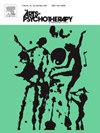Psychological flexibility in art therapy: Practice-based research
IF 1.5
3区 心理学
Q3 PSYCHOLOGY, CLINICAL
引用次数: 0
Abstract
Psychological flexibility is an important quality that is useful across diagnostic categories for enhancing mental health and wellness. This practice-based study investigated how psychological flexibility manifested over 10 individual art therapy sessions. Sixteen clients completed the Ulman Personality Assessment Procedure and art therapy as usual as well as the General Self-Efficacy Scale v2.0 and Acceptance and Action Questionnaire-II. Based on the results of the measures, clients were categorized into high flexibility, low flexibility, and split flexibility groups. Qualitative analysis of these groups indicated different prevalent approaches to art making (high: shifting and meaning making, low and split: familiarity and constriction), including components of the Expressive Therapies Continuum. The study offers tentative indicators to recognize psychological flexibility in art therapy, which points to possible therapeutic factors and interventions.
艺术治疗中的心理灵活性:基于实践的研究
心理灵活性是一项重要的品质,在各种诊断类别中对增强心理健康和健康都很有用。这项以实践为基础的研究调查了心理灵活性在10个个体艺术治疗过程中的表现。16例患者按常规完成Ulman人格评估程序、艺术治疗、一般自我效能量表v2.0和接受与行动问卷- ii。根据测量结果,客户被分为高灵活性,低灵活性和分裂的灵活性组。对这些群体的定性分析表明,艺术创作的不同流行方法(高:转移和意义创造,低和分裂:熟悉和收缩),包括表达疗法连续体的组成部分。该研究提供了初步的指标,以认识艺术治疗中的心理灵活性,指出可能的治疗因素和干预措施。
本文章由计算机程序翻译,如有差异,请以英文原文为准。
求助全文
约1分钟内获得全文
求助全文
来源期刊

Arts in Psychotherapy
Multiple-
CiteScore
3.20
自引率
11.10%
发文量
66
期刊介绍:
The Arts in Psychotherapy is a dynamic, contemporary journal publishing evidence-based research, expert opinion, theoretical positions, and case material on a wide range of topics intersecting the fields of mental health and creative arts therapies. It is an international peer-reviewed journal publishing 5 issues annually. Papers are welcomed from researchers and practitioners in the fields of art, dance/movement, drama, music, and poetry psychotherapy, as well as expressive and creative arts therapy, neuroscience, psychiatry, education, allied health, and psychology that aim to engage high level theoretical concepts with the rigor of professional practice. The journal welcomes contributions that present new and emergent knowledge about the role of the arts in healthcare, and engage a critical discourse relevant to an international readership that can inform the development of new services and the refinement of existing policies and practices. There is no restriction on research methods and review papers are welcome. From time to time the journal publishes special issues on topics warranting a distinctive focus relevant to the stated goals and scope of the publication.
 求助内容:
求助内容: 应助结果提醒方式:
应助结果提醒方式:


